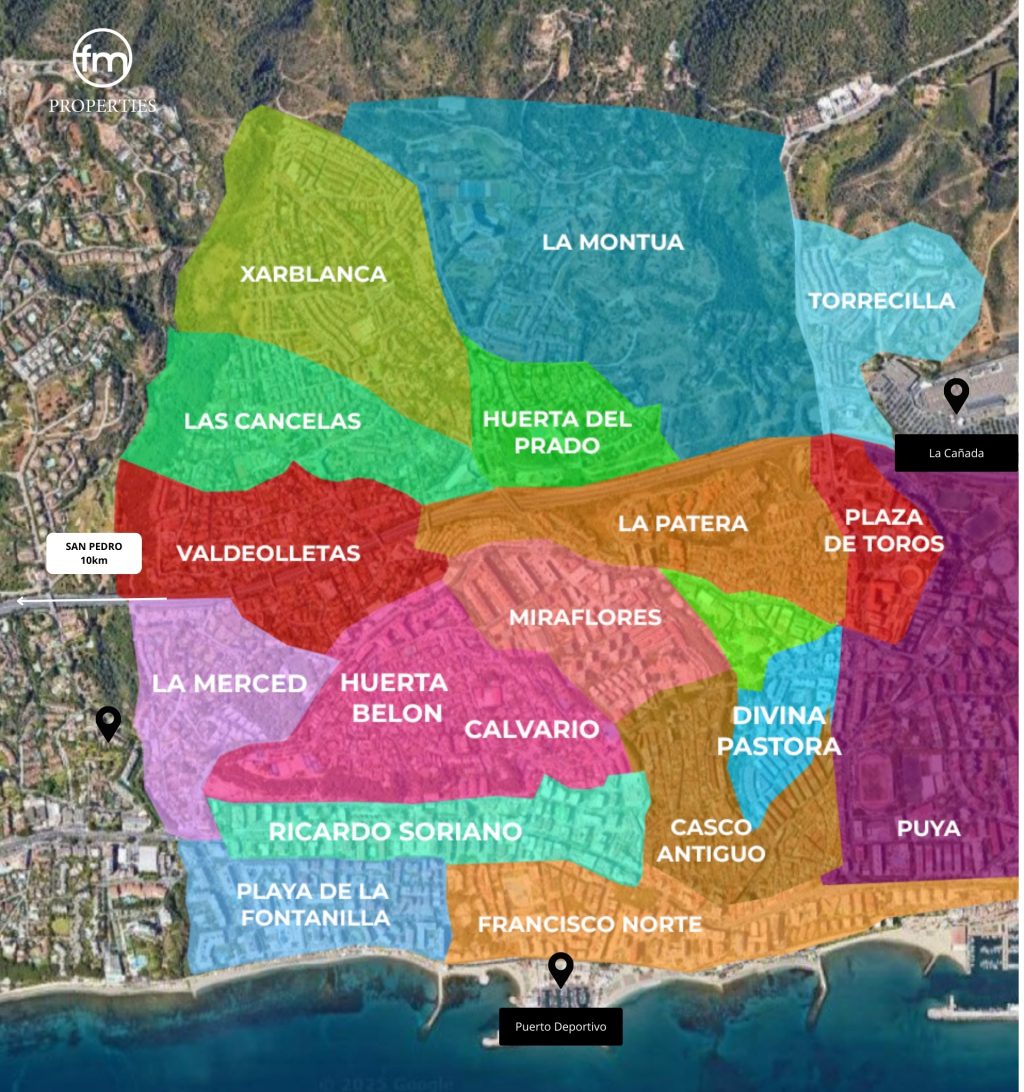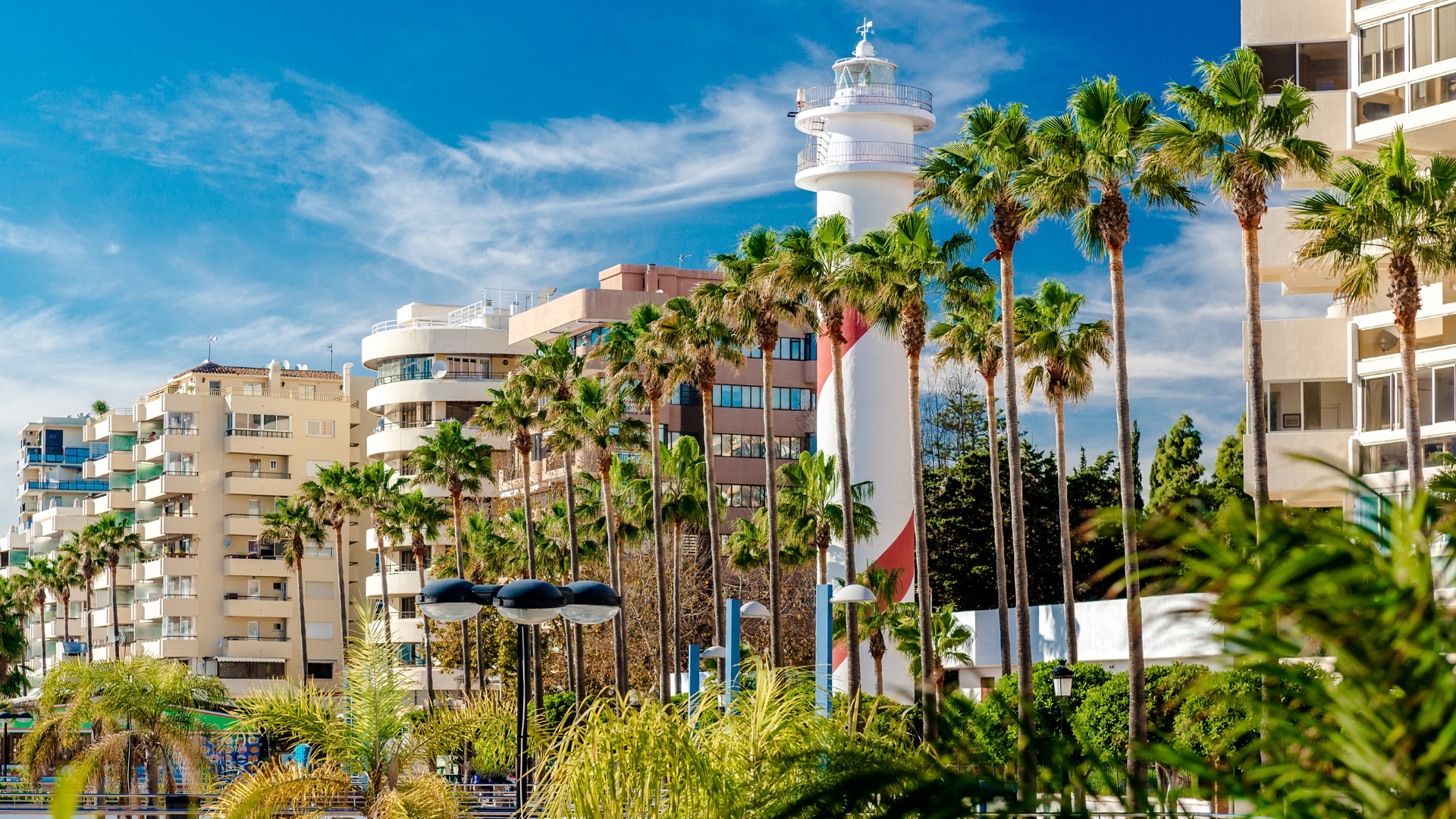
Marbella Pueblo | Marbella
Marbella Pueblo is a place full of charm, history, and a captivating Andalusian essence in the heart of the Costa del Sol. This iconic area, with its narrow cobbled streets and whitewashed buildings adorned with flowers, connects tradition and modernity in a unique atmosphere that captivates from the very first moment.
From its Roman and Moorish roots, Marbella’s old town has witnessed the passage of time, preserving the authenticity of Andalusia through its beautiful squares such as the famous Plaza de los Naranjos, centuries-old churches, and emblematic buildings. Here, you will find exclusive boutiques, art galleries, charming hotels, and restaurants renowned for their exquisite local and international cuisine.
The Historic Center offers a lifestyle that combines tranquility with urban dynamism, ideal for those who value both rich cultural traditions and the convenience of having everything within reach. Its pedestrian-friendly streets, filled with flowers and lively terraces, invite you to enjoy the magnificent Mediterranean climate all year round.
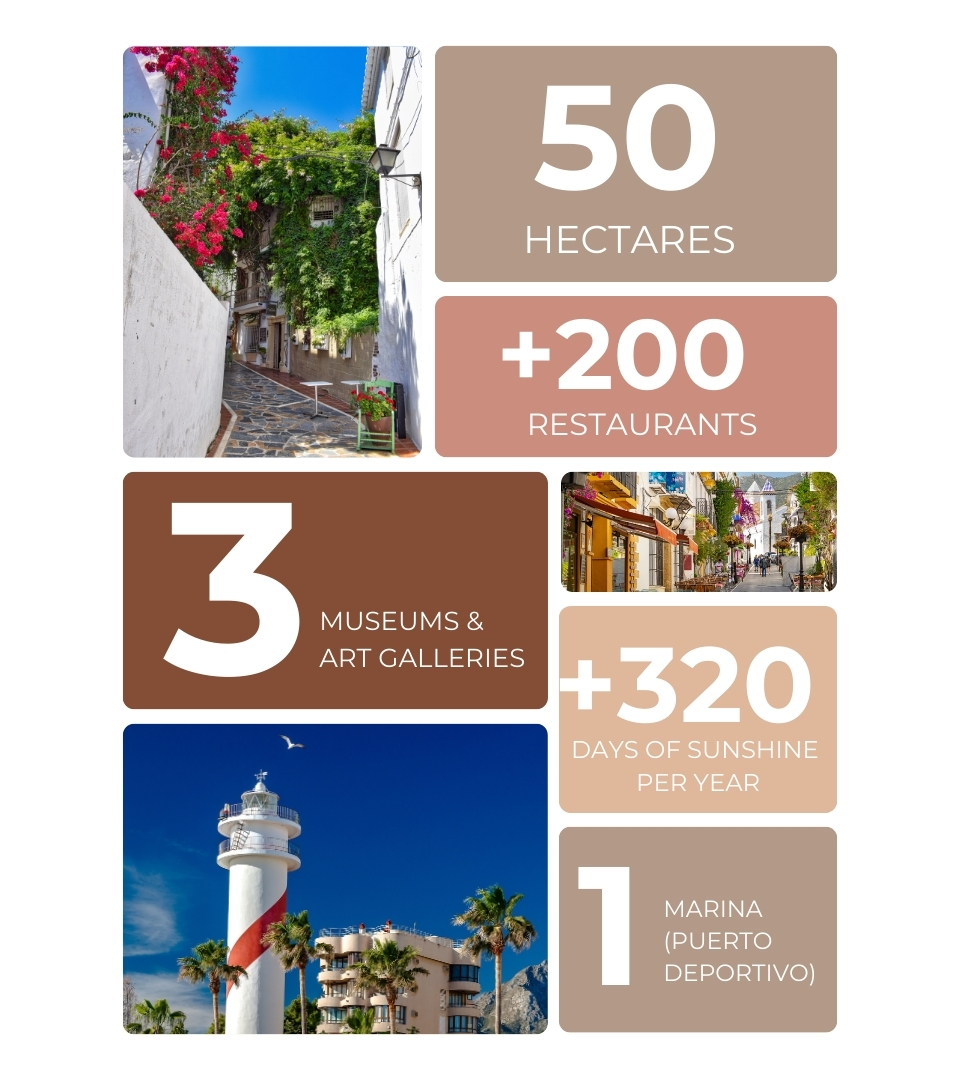
....
....
....
What to Expect
Historical charm, vibrant culture, and traditional gastronomy with a cosmopolitan touch.
Lifestyle
In Marbella's historic center, you will find a harmonious blend of tranquility and urban vitality. Charming streets, exclusive boutiques, traditional and international restaurants, and a dynamic social scene enriched by cultural events and festivities throughout the year.
What Not to Expect
Do not expect large open spaces or isolated surroundings. The old town is characterized by its urban and pedestrian atmosphere, with everything within walking distance.
The Market
Diverse and highly sought-after. The real estate market in the old town includes everything from renovated apartments with historic charm to townhouses and traditional Andalusian residences. The high demand for tourism continually boosts investment returns in this privileged area.
You’ll Fall in Love With
You’ll fall in love with its narrow streets adorned with flowers, the iconic Plaza de los Naranjos, and the exquisite Mediterranean cuisine enjoyed in cozy terraces. The combination of history, a lively social atmosphere, and architectural beauty creates an incomparable setting for living or visiting.
....
....
Location
Boundaries & Accessibility
Marbella’s old town covers approximately 50 hectares in the heart of the city, primarily delimited by the ancient Moorish walls. It has easy access from the A-7 and AP-7 highways, making it strategically located within the central urban area.
Just 37 minutes from Málaga Airport, the historic center stands out for its excellent connectivity, making it ideal for those looking to live or visit a place rich in tradition with convenient access to essential services.
First Impressions
Upon arriving in Marbella's historic center, you will immediately notice the traditional Andalusian essence, especially in the iconic Plaza de los Naranjos. Its narrow, Moorish-style streets, adorned with flowers and small boutiques, create a welcoming, authentic, and charming environment.
The combination of traditional restaurants, artisan shops, and art galleries generates a unique atmosphere—peaceful yet lively and full of culture, captivating both residents and visitors alike.
....
....
Lifestyle
Living in Marbella Pueblo means enjoying the essence of an Andalusian village while benefiting from the convenience and energy of a modern city. Its cobbled streets, lively squares, and proximity to the sea make this an ideal place for those looking for an authentic and dynamic experience with easy access to all amenities.
During the day, Marbella Centro is bustling with life, as both locals and tourists explore its shops, cafés, and markets. By night, the terraces fill with people, and the restaurants offer a wide range of gastronomy, from traditional tapas to high-end international cuisine. In summer, the atmosphere becomes even more vibrant with an influx of visitors, adding excitement and dynamism to everyday life.

The center of Marbella is a fully walkable area, making it easy to get around on foot. There is no need for a car to access shops, banks, supermarkets, or pharmacies. Additionally, it features the Puerto Deportivo de Marbella, a space where nautical leisure blends with a selection of seaside bars and restaurants.
For those looking for a broader shopping experience, Marbella Centro hosts a variety of local shops, exclusive boutiques, and markets, but it is also just a few minutes from La Cañada Shopping, the largest shopping center on the Costa del Sol, offering over 150 stores, restaurants, and a cinema.
Marbella's old town is renowned for its exceptional gastronomic scene. From small tapas bars with over a century of history to innovative restaurants, the variety is immense. Notable places include Skina, awarded Michelin stars, and numerous Mediterranean taverns and restaurants featuring fresh, local ingredients.
Commerce is also a fundamental part of life in Marbella Centro. Along its streets, particularly in areas such as Avenida Ricardo Soriano and the Old Town, you will find everything from artisan shops and designer boutiques to bookstores and traditional markets.
Despite its appearance as a small Andalusian village, Marbella Centro is lively and constantly evolving. It is a destination where both local residents and expatriates from around the world coexist, creating a cosmopolitan and diverse atmosphere.
Tourism plays a key role in the city's dynamics, attracting visitors all year round, especially during the summer months. However, the center is also home to residential neighborhoods of working-class families, adding to its authentic character.
In addition to its rich culinary and commercial offerings, the Historic Center of Marbella boasts an enviable cultural life. Its streets and squares host festivals, art exhibitions, craft markets, and open-air concerts throughout the year. Some cultural landmarks include:
The Spanish Contemporary Engraving Museum, featuring a unique collection of works by artists such as Picasso, Miró, and Dalí.
Teatro Ciudad de Marbella, which offers a year-round schedule of events.
Iglesia de la Encarnación, an iconic monument of Marbella’s historical heritage, located in the heart of the old town.
...
Families
Marbella Pueblo is an ideal place for families seeking an environment with access to schools, parks, and cultural activities for children. Although the area is predominantly urban and touristy, it also has residential neighborhoods where many local and international families live.
Public Schools
Marbella Centro is home to several high-quality public schools, some of which offer bilingual education, making them a great option for families in a multicultural setting. Among the most notable are:
CEIP Antonio Machado – One of the most well-known public schools in Marbella, offering a comprehensive education with bilingual programs.
CEIP Nuestra Señora del Carmen – A school with a strong local tradition, located near the port, known for its high academic standards and welcoming environment.
CEIP Juan Ramón Jiménez – Offers a bilingual program in English and Spanish, making it an excellent choice for families seeking enhanced language education.
IES Sierra Blanca – A secondary school with a strong academic reputation, allowing students to continue their education in a well-established environment.
....
....
Private & International Schools
For those looking for private education, the closest options to Marbella Centro are:
British International School of Marbella – Located just a few minutes away by car, this school follows the British curriculum and is one of the top choices for international families.
Swans International School – With over 50 years of history, this school offers the British curriculum and the IB program, with a strong focus on academic and extracurricular development.
While Marbella Centro has excellent public schools, the most prestigious private options are located in the surrounding areas, providing international education to families seeking a more global academic approach.
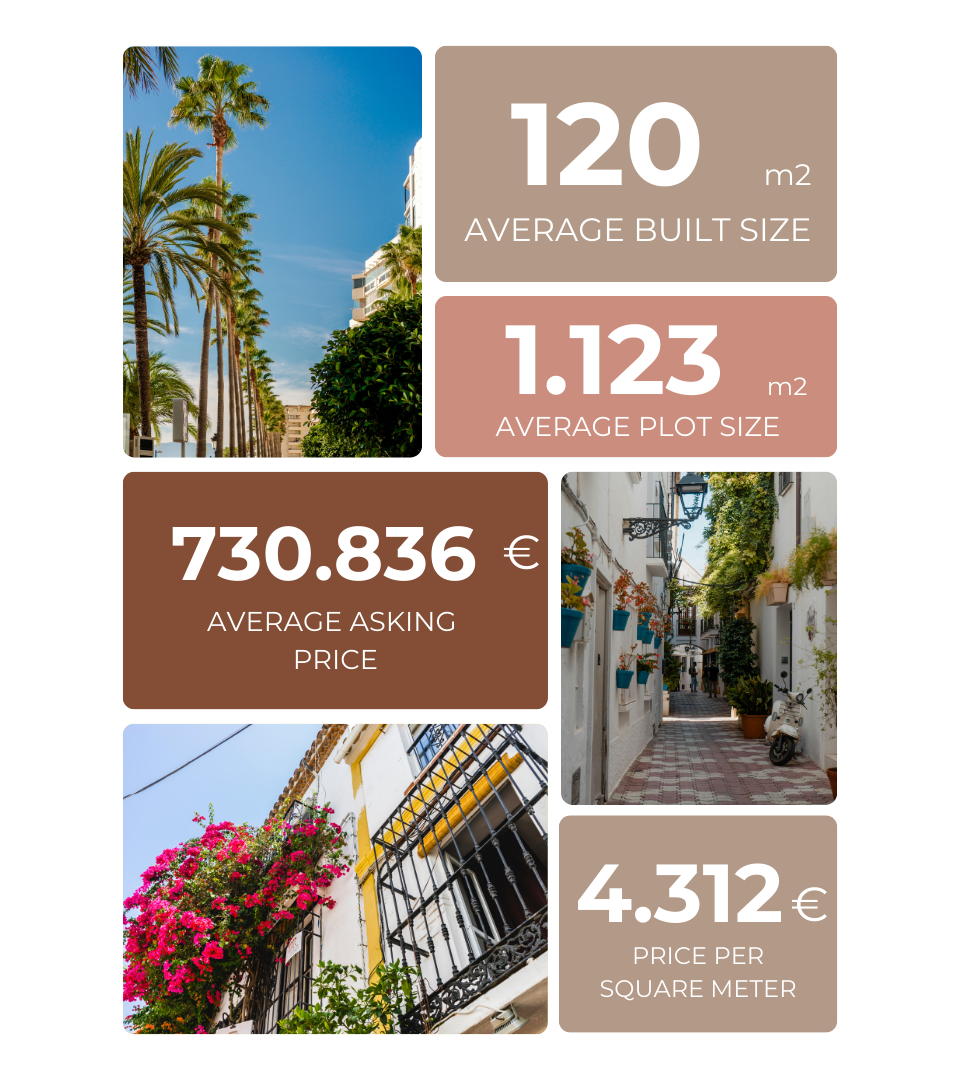
....
Real Estate Market
Marbella Pueblo is one of the most sought-after areas in the city, offering a unique combination of history, convenience, and proximity to essential services. The real estate market here is diverse, featuring everything from modern apartments to traditional Andalusian houses, attracting a variety of buyers looking for both permanent residences and investment opportunities.
Types of Properties
In Marbella Pueblo, you’ll find a broad range of properties reflecting the area’s eclectic character:
Renovated apartments in historic buildings: Homes featuring classic Andalusian designs, with wrought iron balconies and interior courtyards, many of which have been modernized with contemporary interiors.
Penthouses with terraces: Properties offering panoramic views of the old town, the Mediterranean Sea, or Sierra Blanca, highly sought after for their exclusivity.
Townhouses: Homes with traditional charm, ideal for those seeking more space without leaving the city center.
Key Market Data
According to recent data, the real estate market in Marbella presents the following figures:
Average built size: 120 m²
Average plot size: 1,123 m²
Average asking price: €730,836
Price per square meter: €4,312
....
These figures indicate that Marbella remains an attractive option within the Costa del Sol real estate market, offering more accessible prices compared to other premium areas of the city, such as the Golden Mile or Puerto Banús.
Although availability in the old town is limited due to its historic preservation status, renovated properties and modernization projects continue to attract buyers looking for a blend of history and modern comfort.
Marbella Centro remains one of the best locations to live or invest in the Costa del Sol, offering a vibrant lifestyle, charming architecture, and a continuously appreciating real estate market.
Don't miss our properties for sale in Marbella.
....
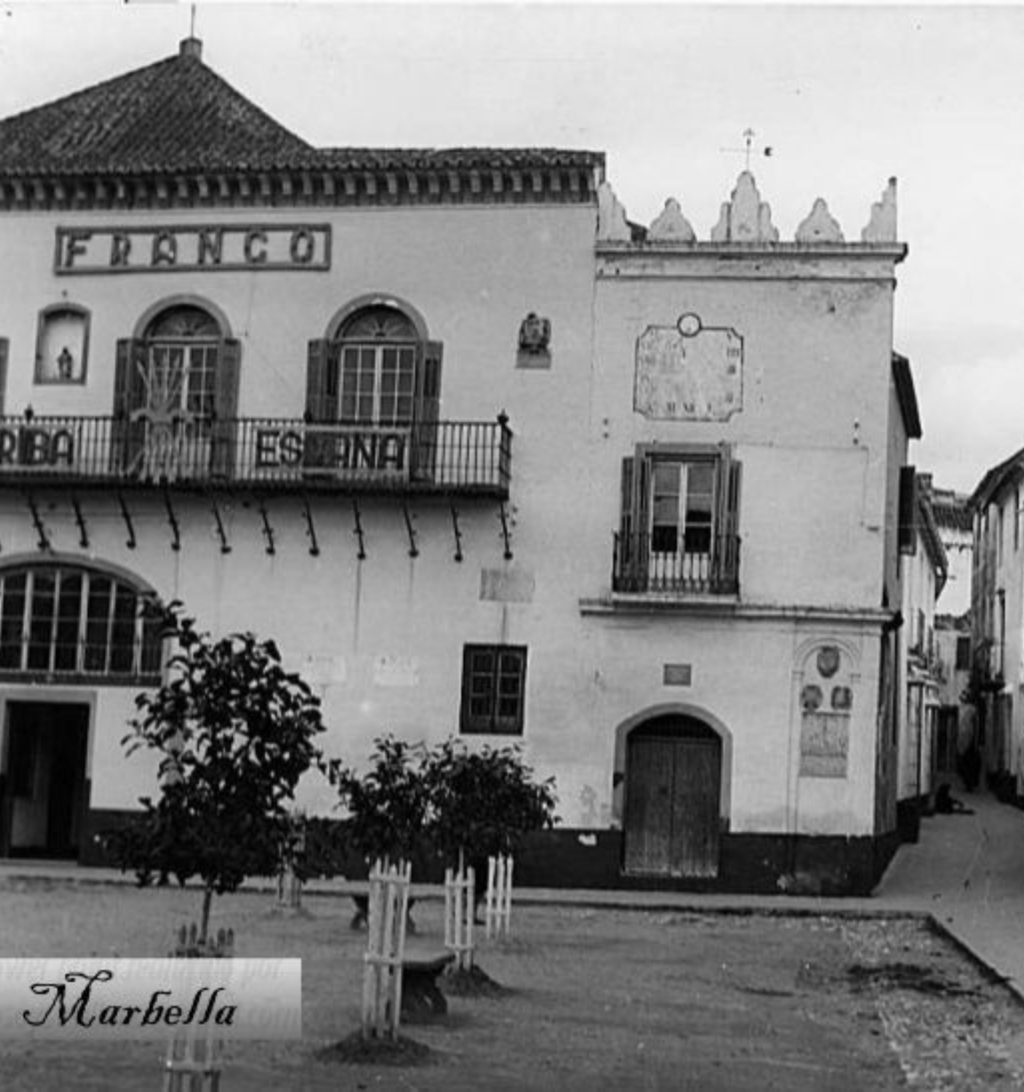
Origins of Marbella
Long before becoming the cosmopolitan and tourist destination it is today, Marbella was a small enclave surrounded by mountains and kissed by the Mediterranean, a place where different civilizations left their mark throughout the centuries.
The first traces of human activity in the area date back over 200,000 years, when prehistoric hunter-gatherers left engravings on the rocks in what is now Las Chapas. Centuries later, the Phoenicians and Romans recognized the strategic value of this coastal settlement for trade and navigation. Thus, Salduba, the ancient Roman Marbella, emerged—a prosperous town where bathhouses, mosaics, and luxurious villas reflected a thriving society.
But Marbella didn’t always bear this name. When the Moors arrived in the 8th century, the city was transformed into a walled town with an imposing castle at its center. The narrow alleys and whitewashed houses that define its historic center today are remnants of that era. "Marbil-la", as the Moors called it, was a peaceful village, safeguarded by walls and surrounded by fertile orchards irrigated by an ingenious system of canals.
In 1485, Marbella's history took a turn when the Catholic Monarchs seized the city, integrating it into the Kingdom of Castile. The old mosques were converted into churches, and the Plaza de los Naranjos became the new heart of the town, with its town hall and stately homes that still stand today. However, unlike other Andalusian cities, Marbella remained a quiet fishing and farming village, away from major trade routes.
A major shift occurred in the 19th century when iron mines in the Sierra Blanca sparked an industrial boom, making Marbella one of Spain’s largest iron producers. The ironworks and foundries attracted workers and traders, bringing new energy and dynamism to the town.
By the mid-20th century, Marbella was on the verge of another transformation. This time, it wasn’t industry that changed its fate, but tourism. Aristocrat Ricardo Soriano and his nephew, Prince Alfonso of Hohenlohe, saw Marbella as an undiscovered paradise. With the opening of the Marbella Club Hotel, the town became a retreat for European elites, attracting actors, entrepreneurs, and royalty seeking sun, privacy, and luxury.
Today, Marbella preserves a perfect balance between its past and present. Its streets still tell stories of centuries past, its plazas remain places for conversation under the shade of orange trees, and its Andalusian village essence lives on, even as it has become one of Europe’s most exclusive destinations.
...
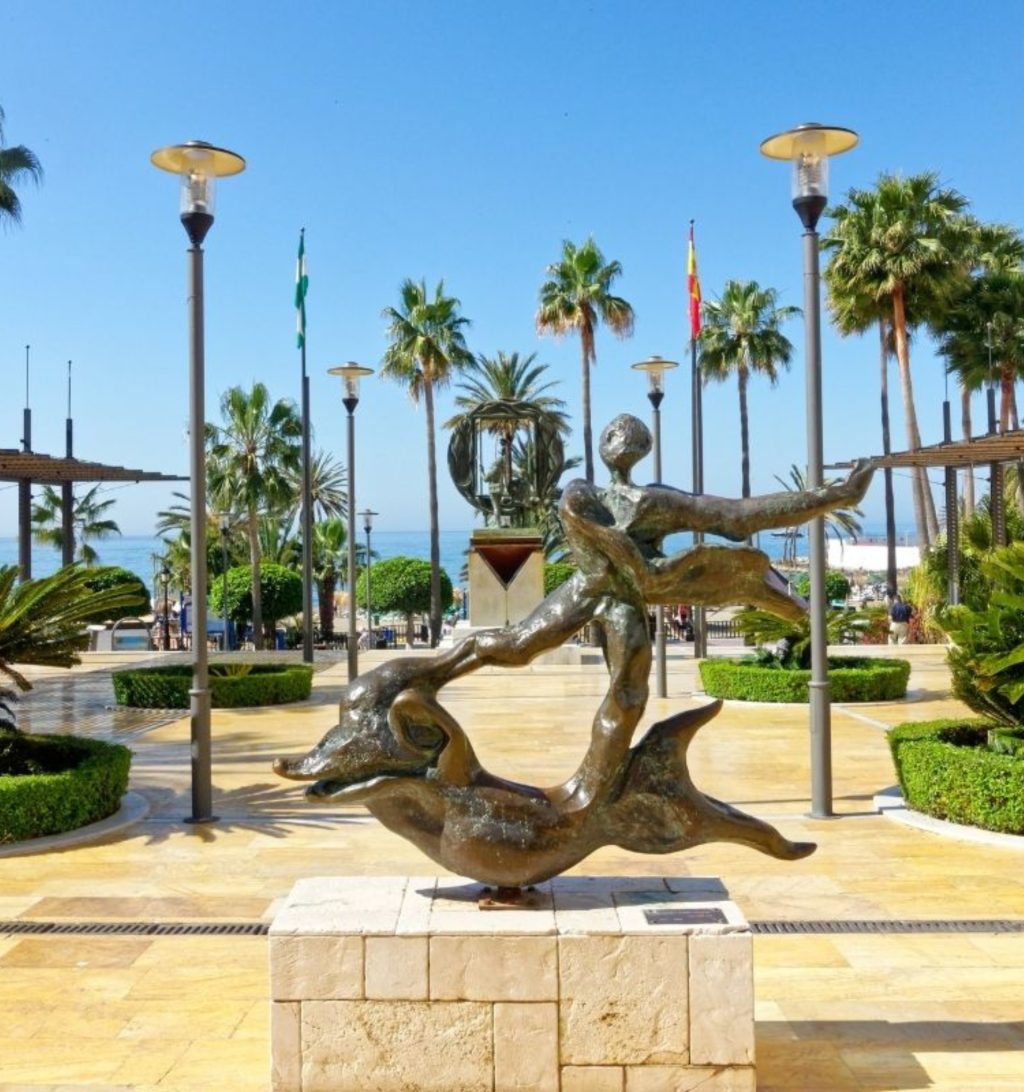
...
Fun Facts
19th Century Steel Capital: In the 19th century, Marbella housed Spain’s first blast furnaces, producing 75% of the nation’s iron at facilities like La Concepción and El Ángel.
Extensive Award-Winning Coastline: With 27 kilometers of coastline, Marbella has 24 beaches recognized with the Blue Flag, a symbol of quality and excellence.
Dalí Outdoor Museum: Between the historic center and the promenade, Avenida del Mar features sculptures inspired by Salvador Dalí’s surrealist style, offering a unique open-air art experience.
Gastronomic Destination of Excellence: Marbella is home to six Michelin-starred restaurants, showcasing the creativity and quality of its culinary scene.
Golfers’ Paradise: Of the 47 golf courses in Málaga province, 17 are located in Marbella, solidifying it as a prime destination for golf enthusiasts.
Cultural Diversity: Marbella is home to residents from over 100 nationalities, enhancing its multicultural and cosmopolitan atmosphere.
Privileged Climate: Marbella officially enjoys the best climate in continental Europe, with mild temperatures and over 300 days of sunshine per year.
